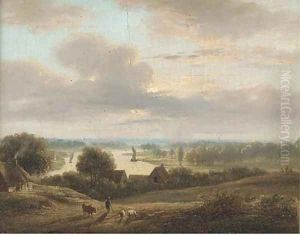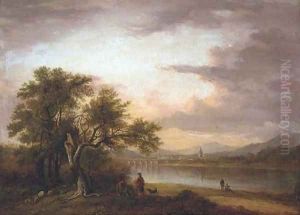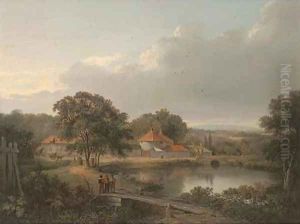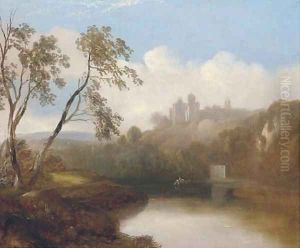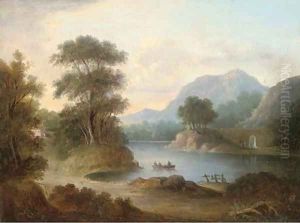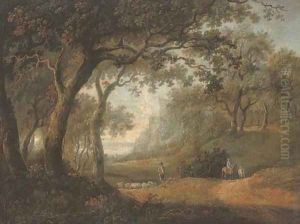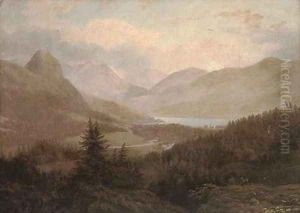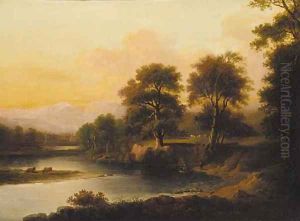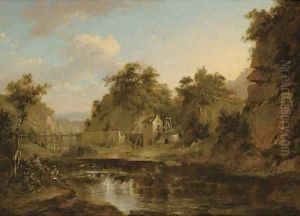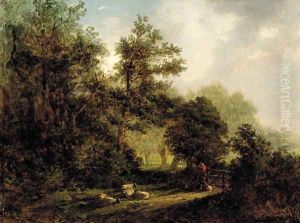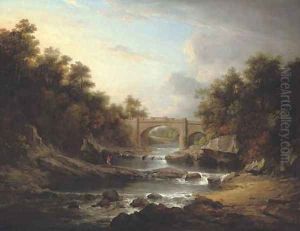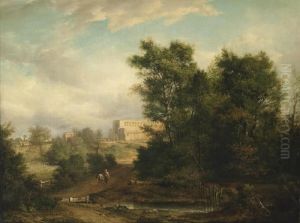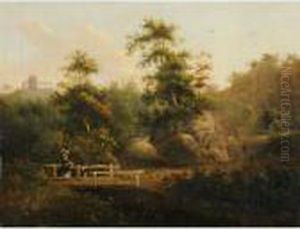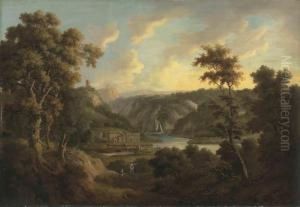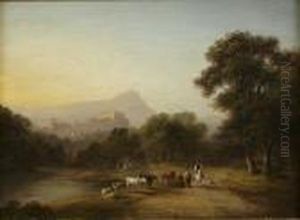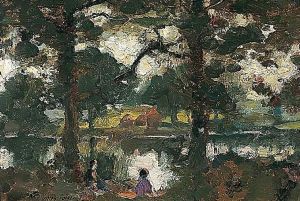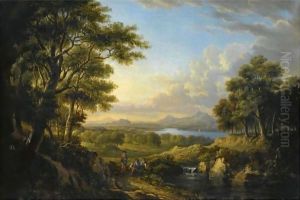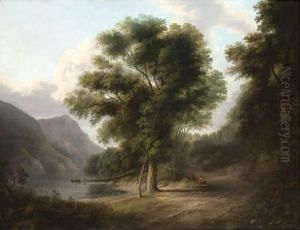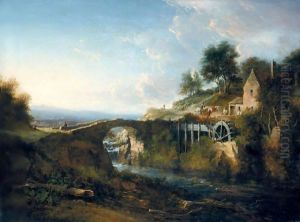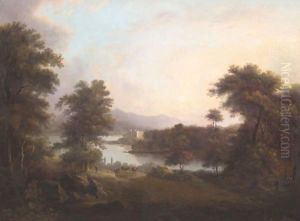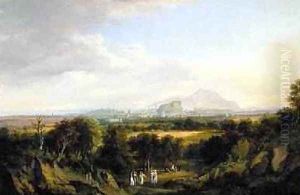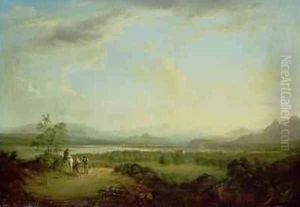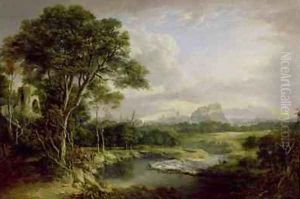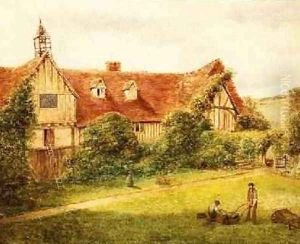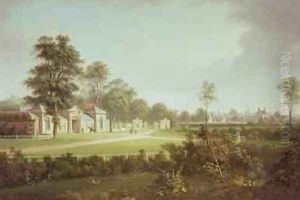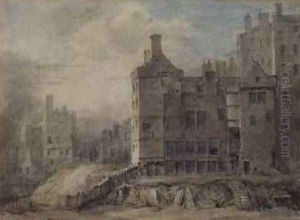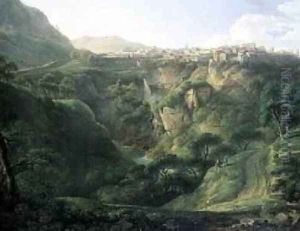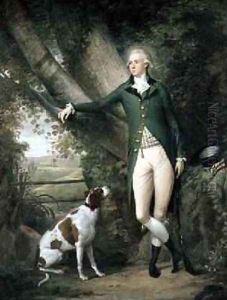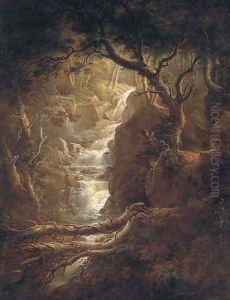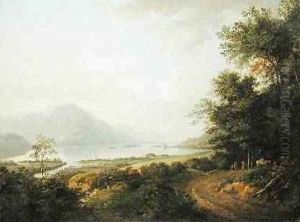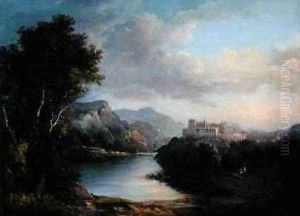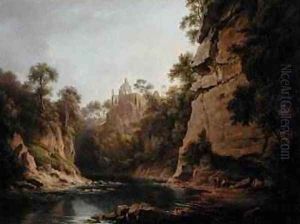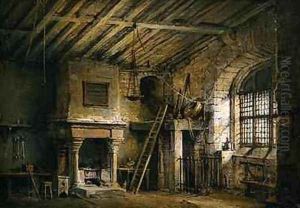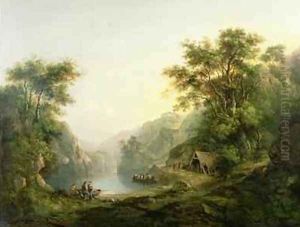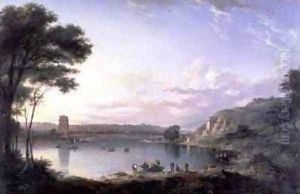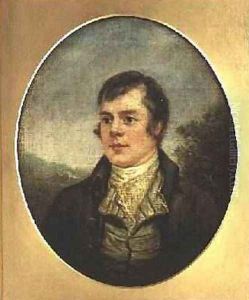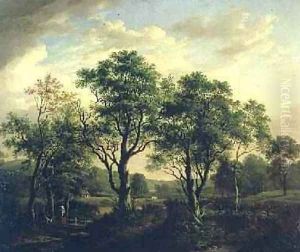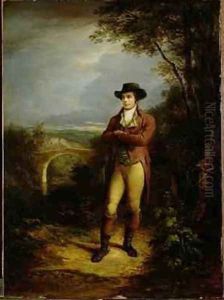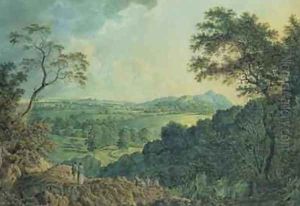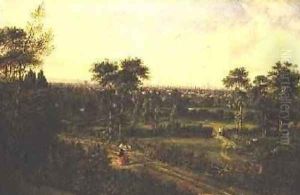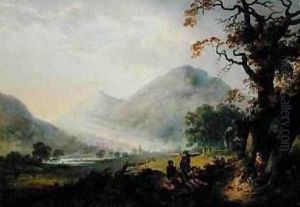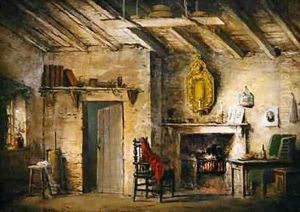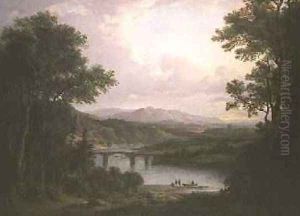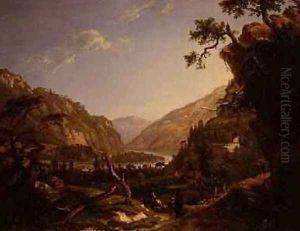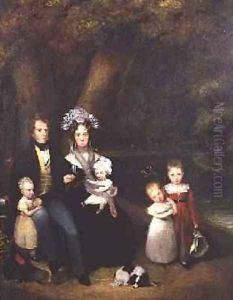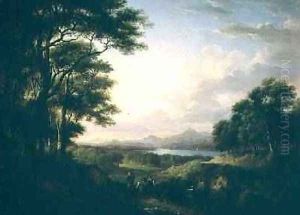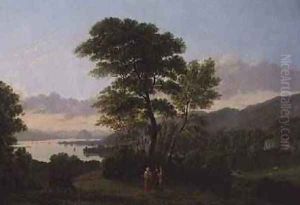Alexander Nasmyth Paintings
Alexander Nasmyth was a Scottish portrait and landscape painter, a contemporary of Sir Henry Raeburn, and is often referred to as 'the father of Scottish landscape painting'. Born in Edinburgh on September 9, 1758, to a builder and architect, Nasmyth displayed an early interest in art and was apprenticed to a coach painter before studying at the Trustees’ Academy, which was the precursor to the Edinburgh College of Art.
Nasmyth's talent was recognized early on and led to him moving to London in 1774 to work with the renowned Scottish portrait painter Allan Ramsay, who was the principal painter to King George III. During his time in London, Nasmyth honed his skills, particularly in portrait painting. However, landscape painting was his true passion, and he often sought to capture the beauty of the Scottish countryside in his works.
In 1786, Nasmyth returned to Edinburgh where he established himself as a successful portraitist. Despite this success, he continued to be drawn towards landscape painting. He was deeply influenced by the classical landscapes of Claude Lorrain and often integrated these influences into his depiction of Scottish scenery.
Nasmyth was also an important figure in Edinburgh’s intellectual and cultural circles, counting many of the leading lights of the Scottish Enlightenment among his friends and patrons. His home became a hub of intellectual activity, and he played a significant role in the development of the Scottish landscape tradition, not only through his own paintings but also as a teacher. Among his pupils was his son, Patrick Nasmyth, who became a well-known landscape painter in his own right.
Throughout his career, Alexander Nasmyth produced a vast body of work that included landscapes, portraits, and even designs for bridges and buildings, reflecting his early training in architecture. His landscapes in particular captured the imagination of the public and helped to foster a new appreciation for the natural beauty of Scotland.
Nasmyth's contribution to Scottish art was significant. He helped to shape a national identity through his landscapes at a time when Scotland was undergoing dramatic changes in the wake of the Enlightenment and the Act of Union with England. His works often feature a romanticized vision of Scotland, imbued with a sense of history and tradition.
Alexander Nasmyth passed away on April 10, 1840, in Edinburgh. His legacy lives on through his paintings, which continue to be celebrated for their beauty and historical significance. Nasmyth's influence extended beyond his immediate family and pupils; he left an indelible mark on the Scottish landscape genre that would influence generations of artists to come.
